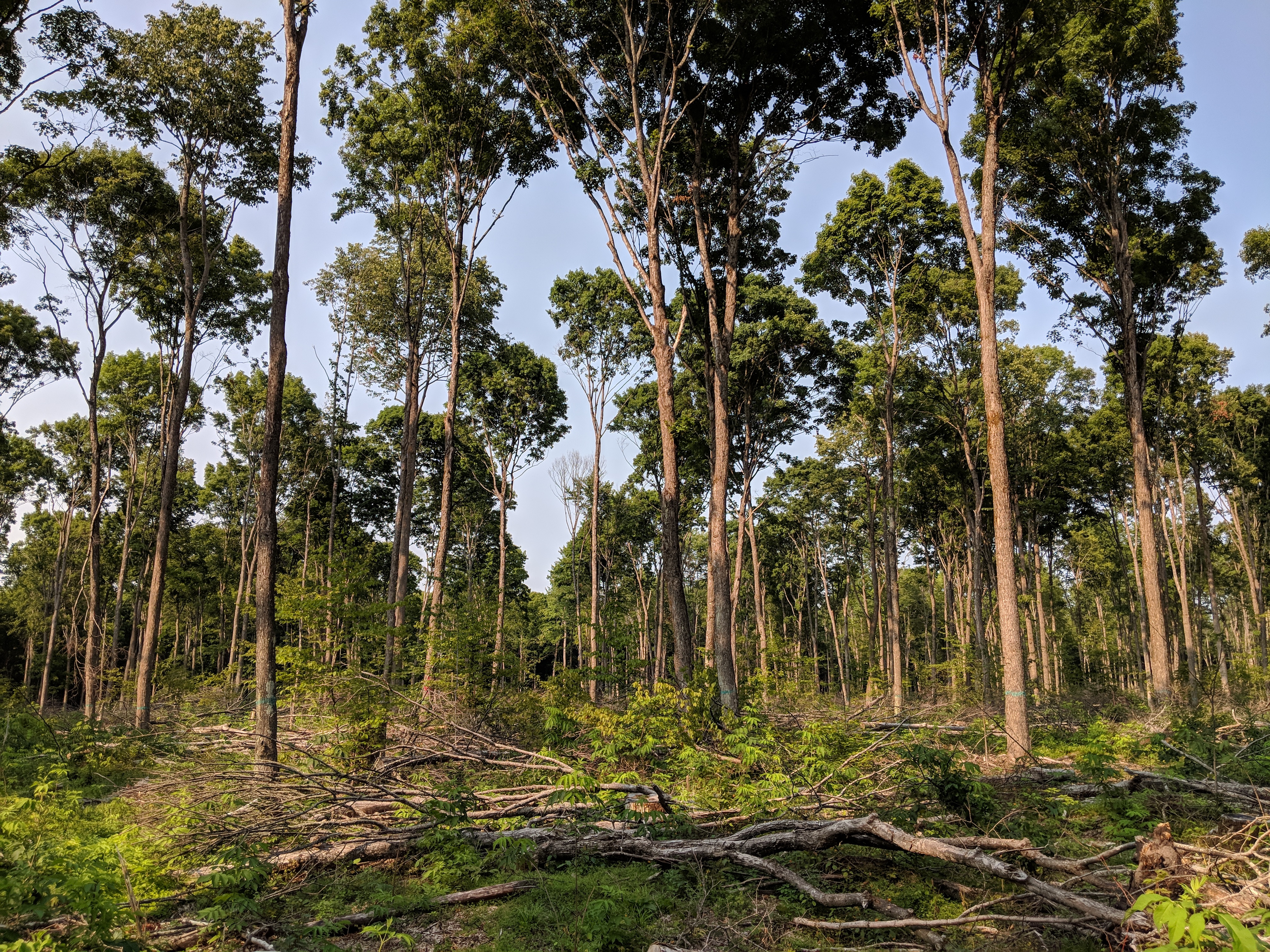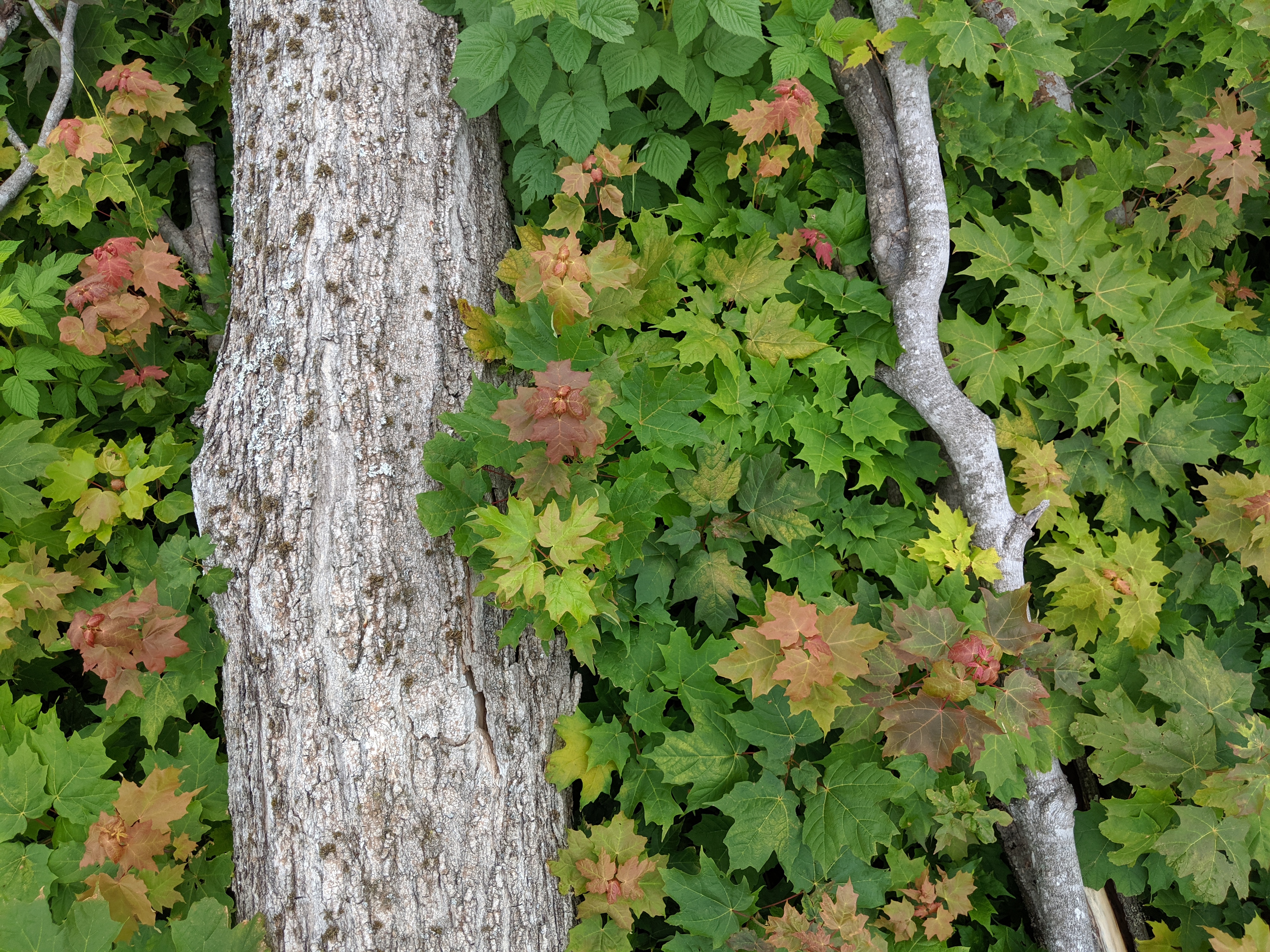Northern Hardwood Study Collaboration with MSU and MDNR Extended
Michigan State University (MSU) researchers have received a six-year extension to continue research on alternative silvicultural systems in northern hardwood forests with the Michigan Department of Natural Resources.

Professor Mike Walters and PhD candidate Evan Farinosi in the Department of Forestry at MSU will continue work conducted with recent PhD graduate Catherine Henry alongside Department of Fisheries and Wildlife chair Gary Roloff, and PhD candidate Melissa Starking.
The Study
In Spring of 2015, Walters and Roloff met with the Wildlife Division and Forest Resources Division of MDNR to discuss a potential project integrating deer and northern hardwoods management and research. The goal was to improve tree regeneration outcomes (well stocked, species diverse stands) in the context of current deer populations.
The project MSU and MDNR co-developed to address these goals is an operational (i.e. management realistic) scale experiment that evaluates the ability of multiple silvicultural systems to foster desirable tree regeneration outcomes, including monitoring of tree regeneration dynamics and deer use. The project was funded for six years, with the knowledge that it would extend to a longer-term project given the time it takes for tree regeneration to occur.
The study involves four harvesting treatments plus two post-harvest understory treatments, which were implemented in 140 stands across northern Michigan at operational scale (each stand is 30 acres, or about 12 hectares). Evaluating alternative silvicultural systems was important, because single tree selection, the dominant silvicultural system used in Michigan over the last 60 years, has recently been demonstrated to result in low diversity and density of tree species regeneration desirable for management, especially in areas with heavy deer usage.
The control of the study, or business as usual, is single-tree selection, a silvicultural system which removes select trees across all diameter classes at intervals of 15–20 years. This promotes good form and health of stems in smaller diameter classes, while providing a steady stream of valuable timber products from larger diameter classes. The other silvicultural systems being tested are the shelterwood system, which removes approximately half of the overstory tree cover to provide a semi-shaded environment and seeds for tree seedlings; the seed tree system, which leaves only six to eight trees per acre to provide seeds and high light conditions for seedlings; and a variable harvest gap size treatment, which provides a broad range of growing environments.

Two understory treatments were also employed. In one-half of stands, all tree tops less than 8 inches in diameter were left to provide a physical barrier to deter deer browsing. The other half of stands were treated with herbicide, then scarified to remove advance regeneration of undesirable species and to create more acceptable growing conditions for more desirable trees.
To observe the effects of these methods, multiple monitoring systems are in use. Deer are monitored with motion-activated cameras to observe how they respond to the harvest treatments. Millions of photos have been taken of wildlife responses. Vegetation was surveyed in each stand prior to and shortly after harvest, with long-term plans to monitor changes in vegetation periodically.
Collaboration with Students
One vital aspect of the study has been the amount of hard work and dedication from graduate students Catherine Henry (Department of Forestry), Evan Farinosi (Forestry), and Melissa Starking (Department of Fisheries and Wildlife).
Henry did extensive field work, collecting about 1,500 sugar maple basal tree discs from recently harvested stumps on 51 sites. Her work focused on sugar maple, as it is the focal species of management and is found in all of the stands in the study, which she then aged in the lab. Based on her results, almost all of the stands were established, most likely following heavy logging, approximately 90-120 years ago.
In stands now subject to three or more partial harvests over 60 years of single tree selection, small trees (2–4 inches in diameter) are generally assumed to be numerous and young (i.e. regenerated in response to partial harvests) and larger trees old. Her results are variable, but generally indicate that small trees are few (low density) and are much older than anticipated under single tree selection management. In others words, single tree selection has failed to regenerate desirable sugar maple trees in many stands.

Farinosi has also done extensive field work, being primarily responsible for managing regeneration survey crews during the 2017-19 field seasons, with more on the way. In 2020 he returned to each research site to quantify deer browsing impacts. He is now in the process of compiling and analyzing the regeneration and browsing data for use in future publications.
Early browsing results indicate large differences in tree damage by deer among tree species, tree size classes (seedlings to small trees), stands, and silvicultural treatments, with patterns reinforcing the notion that deer are important architects of current tree regeneration patterns, and that some silvicultural treatments may hold promise in ameliorating their impacts.
Starking has been responsible for monitoring wildlife use, and is currently cataloging over 4.5 million photos taken of wildlife responses in order to analyze how deer and other wildlife interact with silvicultural treatments. Organization of this data is a constant task, but initial results are expected to come in the next few months.
Partnership with Management and Academia
Walters describes the project as “truly a partnership between academia and management.”
The study is intimately tied to MDNR management, using sites and working with district foresters across 15 different districts.
“Most projects academics do are self-contained and have a single or few stands. The amount of work the state [of Michigan] did is remarkable,” said Walters. Working at what MDNR calls “operational scale,” Walters reflects without this collaboration, he would have a hard time finding a project that comprised manipulations on 140 sites.

Management at MDNR and the Walters and Roloff labs worked in collaboration to develop questions and solutions together, something Walters said was “fairly unique to have that ambitious co-development.”
In addition to the scientific results and management applications emerging from the study over the next decade, Walters’ and Roloff’s treatment areas have additional value as local examples that forest managers can use as references as they move forward in modifying their management for improved tree regeneration outcomes.
Walters credits many years of experience working with MDNR for the development of a study of this magnitude. “Our long-term relationship made this happen, because they know we will deliver,” said Walters.
“Being so aggressive with treatments is unique, and allowing us to do that is trust. If you’re not regenerating the forest, then you’re not managing sustainably for timber values. The agency’s determination to manage forests sustainably has made this happen,” said Walters.



 Print
Print Email
Email

